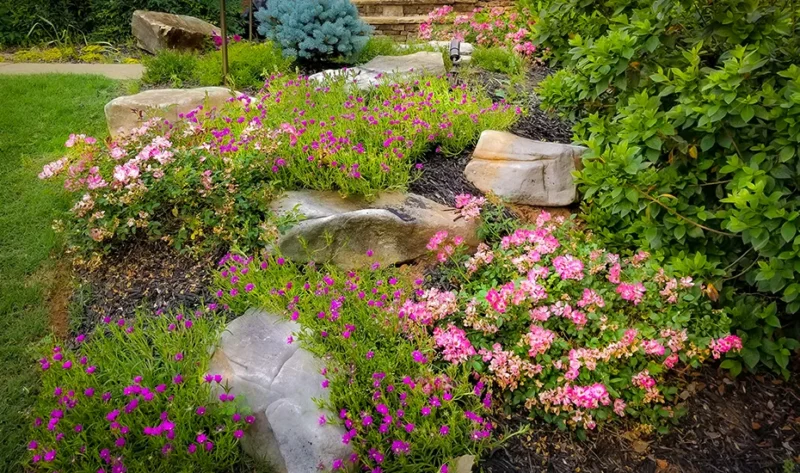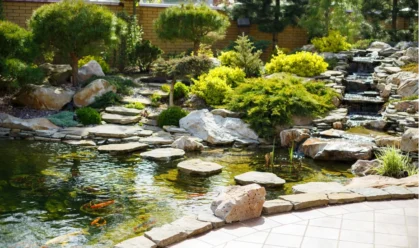Landscaping is more than just an aesthetic enhancement for your property; it’s a reflection of your style and a means to create a serene and inviting outdoor environment. The plants you choose are at the heart of effective landscaping, which plays a pivotal role in defining your garden’s character and functionality. However, the true beauty of a landscape is maintained through diligent care.
In this guide, we’ll explore how to keep your landscaping plants healthy and vibrant, offering practical tips and expert advice to ensure your garden thrives year-round.
Understanding the Importance of Landscaping Plants
Landscaping plants are the backbone of any garden design, offering numerous benefits that go beyond mere decoration. Here’s why they matter:
1. Aesthetic Appeal: Plants add color, texture, and structure to your landscape. From vibrant flower beds to lush green shrubs, they create visual interest and enhance your outdoor space’s beauty.
2. Environmental Benefits: Plants improve air quality by absorbing carbon dioxide and releasing oxygen. They also help reduce soil erosion, provide shade, and support local wildlife.
3. Functional Uses: Landscaping plants can be natural privacy screens, windbreaks, and noise barriers. They contribute to creating comfortable outdoor living areas and functional spaces.

Popular Landscaping Plants in Atlanta
Atlanta’s climate offers a diverse range of plants that thrive in its warm, humid environment. Some popular choices include:
- Azaleas: Known for their vibrant blooms in spring, azaleas provide stunning color and are ideal for shaded areas.
- Hydrangeas: These plants produce large, colorful flower clusters and are versatile in both sun and shade.
- Ornamental Grasses: Add texture and movement to your garden with grasses like fountain grass and feather reed grass.
- Daylilies: Hardy and low-maintenance, daylilies bring bright, cheerful flowers to any landscape.
- Camellias: Blooming in winter and early spring, camellias provide a welcome splash of color during colder months.
Key Aspects of Landscaping Plant Care!
Maintaining healthy landscaping plants involves several critical aspects. Let’s break down each one to ensure your plants thrive.
1. Watering
Watering is crucial for plant health, but the right amount and frequency depend on the plant species, soil type, and weather conditions. Here’s a quick guide:

- Deep Watering: Water your plants deeply to encourage deep root growth. Shallow watering can lead to weak roots and increased vulnerability to drought.
- Frequency: Adjust watering schedules based on the season. Plants typically need more water during hot, dry periods and less during cooler, rainy seasons.
- Time of Day: Water in the early morning to minimize evaporation and allow plants to absorb moisture before the day’s heat.
General Watering Needs for Common Landscaping Plants!
| Plant Type | Watering Frequency (Summer) | Watering Frequency (Winter) |
|---|---|---|
| Azalea | 1-2 times per week | 1 time per month |
| Hydrangeas | 2-3 times per week | 1-2 times per month |
| Ornamental Grasses | Weekly | Monthly |
| Daylilies | Weekly | Bi-monthly |
| Camellias | 1-2 times per week | Monthly |
2. Fertilizing
Fertilizing helps plants grow strong and healthy by providing essential nutrients. Consider these tips:

Type of Fertilizer: Use balanced fertilizers with equal parts nitrogen (N), phosphorus (P), and potassium (K) for general plant health. Specialized fertilizers may be needed for specific plant types.
- Application Schedule: Fertilize during the growing season (spring and summer) and avoid fertilizing in late fall or winter when plant growth slows.
- Application Method: Follow package instructions for the correct amount and method of application. Over-fertilizing can harm plants and the environment.
3. Pruning
Pruning helps maintain plant shape, remove dead or diseased wood, and promote healthy growth. Here’s how to do it right:
- Timing: Prune spring-flowering plants after blooming, and summer-flowering plants in late winter or early spring.
- Technique: Use clean, sharp tools to make precise cuts. Remove dead or damaged branches and thin out dense areas to improve air circulation.
- Frequency: Regular pruning helps prevent overcrowding and encourages new growth. Aim to prune at least once a year for most plants.
Pruning Tips
- Always cut at a slight angle to prevent water accumulation.
- Avoid heavy pruning in late summer or fall to prevent new growth that may not harden off before winter.
- Sanitize pruning tools before use to prevent disease spread.
4. Mulching
Mulching is an effective way to maintain soil moisture, suppress weeds, and improve soil health. Follow these guidelines:
- Types of Mulch: Organic mulches (e.g., wood chips, bark) decompose over time, adding nutrients to the soil. Inorganic mulches (e.g., gravel, landscape fabric) are long-lasting and low-maintenance.
- Application: Apply a layer of mulch 2-3 inches thick around plants, keeping it away from plant stems to prevent rot.
- Benefits: Mulch helps retain soil moisture, regulate soil temperature, and reduce weed growth.

5. Pest and Disease Control
Monitoring for pests and diseases is crucial for plant health. Implement these strategies:
- Regular Inspection: Check your plants frequently for signs of pests or diseases, such as discolored leaves, holes, or webbing.
- Natural Remedies: Use natural pest control methods like introducing beneficial insects (e.g., ladybugs) or applying neem oil.
- Chemical Controls: If necessary, use chemical pesticides and fungicides according to label instructions, and apply them during the appropriate times to minimize harm to beneficial insects.
Pest and Disease Prevention
- Practice good garden hygiene by removing debris and fallen leaves.
- Rotate plants to prevent soil-borne diseases.
- Ensure proper spacing to improve air circulation and reduce disease risk.
6. Soil Health
Healthy soil is the foundation of a thriving garden. Here’s how to maintain it:
- Soil Testing: Test your soil to determine its pH and nutrient levels. Amend the soil based on test results to improve its fertility and structure.
- Organic Matter: Add compost or organic matter to improve soil texture, water retention, and nutrient content.
- Aeration: Aerate soil to prevent compaction and improve root growth. This can be done with a garden fork or a mechanical aerator.
7. Seasonal Care
Adjust your plant care routine according to the seasons. Each season requires different attention to keep your garden in top shape:

Spring: Focus on fertilizing, pruning, and planting new plants. Prepare your garden for the growing season.
- Summer: Monitor for pests, ensure consistent watering, and manage heat stress by providing shade if needed.
- Fall: Clean up fallen leaves, prepare plants for winter, and apply mulch to protect roots.
- Winter: Protect plants from harsh conditions with covers or wraps. Limit watering and avoid fertilizing.
8. Choose the Right Plants
Selecting plants suited to your local climate and soil conditions ensures better growth and reduces maintenance. Here’s what to consider:
- Climate Adaptability: Choose plants that thrive in your local climate, taking into account temperature ranges, humidity, and rainfall.
- Soil Compatibility: Select plants suited to your soil type (e.g., sandy, clay, loamy). Perform soil amendments if necessary.
- Sunlight Requirements: Match plants with their preferred light conditions (e.g., full sun, partial shade, full shade).
9. Create a Maintenance Schedule
A consistent maintenance schedule helps keep your garden in top shape. Here’s how to structure it:
- Weekly Tasks: Watering, weeding, and inspecting plants for pests.
- Monthly Tasks: Fertilizing, pruning, and checking soil health.
- Seasonal Tasks: Preparing for seasonal changes, mulching, and protecting plants.
Sample Maintenance Schedule
- Week 1: Watering, weeding, pest inspection
- Week 2: Fertilizing, pruning if needed
- Month 1: Soil testing, adding compost
- Seasonal: Clean-up, protection, preparation
10. Seek Professional Help
Sometimes, it’s best to consult with landscaping professionals for expert advice and services. They can:
- Assess Plant Health: Diagnose issues with plant health and recommend treatments.
- Design and Install: Help design and install new landscaping features.
- Provide Maintenance: Offer regular maintenance services to keep your garden looking its best.
When to Call a Professional?
- Severe Pest Infestations: If you have an overwhelming pest problem.
- Complex Planting Designs: For intricate or large-scale landscaping projects.
- Plant Diseases: When dealing with serious plant diseases or infestations.
Conclusion
Caring for landscaping plants is a rewarding endeavor that enhances the beauty and functionality of your outdoor space. You can ensure that your garden remains vibrant and healthy by understanding the importance of proper plant care, including watering, fertilizing, pruning, mulching, and pest control. Regular maintenance and attention will yield a lush, thriving garden, whether working with popular Atlanta plants like azaleas and hydrangeas or exploring other varieties.
For expert assistance with your landscaping needs, including design, installation, and maintenance, you can hire top landscaping companies in Atlanta!


























